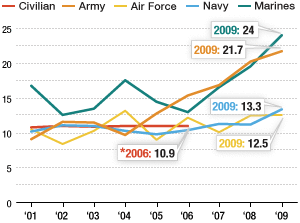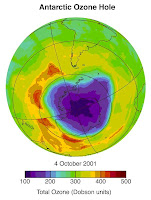New evidence from studies done by psychologists suggest some common interactions in our daily lives that may actually cause these brain farts. Many of these causes are typically things that annoy, cause illusions, or are things where we simply have brains that did not evolve to perceive such things.
So here we go:
Photos
 In the evolutionary history of our brains, we simply did not develop the subconscious aspect of separating objects or people from what is in the picture. We can consciously see or understand what the photo is, but what is hard for us is the separating aspect. For example, studies done on people throwing darts demonstrate that people are much less accurate when throwing darts at pictures of people they like (babies, family, etc) but the opposite comes true when throwing at those they do not (Hitler for example). Our brains, while great, fail to separate appearance from reality.
In the evolutionary history of our brains, we simply did not develop the subconscious aspect of separating objects or people from what is in the picture. We can consciously see or understand what the photo is, but what is hard for us is the separating aspect. For example, studies done on people throwing darts demonstrate that people are much less accurate when throwing darts at pictures of people they like (babies, family, etc) but the opposite comes true when throwing at those they do not (Hitler for example). Our brains, while great, fail to separate appearance from reality. Beeps
Irritating and annoying as they are, beeps are everywhere in our modern world. Just like photos, our brains did not evolve to handle beeps. Thus we struggle to grasp them and find them less than pleasant (think alarms). We enjoy and easily handle natural sounds. Natural sounds are made up of transfers of energy, one object coming into contact with another, and then gradually dissipating. The perceptual system evolved for this, but not for beeps. Beeps are loud and then stop quickly, with no change over time or fading away. Because of this difference it confuses the brain and thus causes a form of brain fart.
Phones
 If you are like me, I bet you get constant updates (push notifications to techies) on your iPhone or like device. Texts, news, sports, new make your move on Words with Friends... whatever, we are constantly attached to our phones. For our brains, we are constantly bombarding them with sensory data, filtering out useless noise and detecting important signals. Because we get so many vibrations on our phones, we develop "phantom vibrations", over time we miss-associate daily life sounds as getting an update, text, or phone call. This causes a form of brain fart.
If you are like me, I bet you get constant updates (push notifications to techies) on your iPhone or like device. Texts, news, sports, new make your move on Words with Friends... whatever, we are constantly attached to our phones. For our brains, we are constantly bombarding them with sensory data, filtering out useless noise and detecting important signals. Because we get so many vibrations on our phones, we develop "phantom vibrations", over time we miss-associate daily life sounds as getting an update, text, or phone call. This causes a form of brain fart.Wheels
 Ever looked at a wheel going around? It appears to be going backwards right? A theory on this phenomenon, called the "continuous wage wheel illusion", where in which the brain's motion perception system takes samples of its inputs as a series of discrete snapshots (think of how a movie camera works, assembling individuals frames into a movie like projection). Our brains are not always fast enough to interpret the frame rate of individual pictures, and thus make things look backwards as in the car wheel example. This overworking of the brain, causes a brain fart once again.
Ever looked at a wheel going around? It appears to be going backwards right? A theory on this phenomenon, called the "continuous wage wheel illusion", where in which the brain's motion perception system takes samples of its inputs as a series of discrete snapshots (think of how a movie camera works, assembling individuals frames into a movie like projection). Our brains are not always fast enough to interpret the frame rate of individual pictures, and thus make things look backwards as in the car wheel example. This overworking of the brain, causes a brain fart once again.Doors
 Finally, and this one came to me as a surprise, entering a new room through a doorway causes a brain fart. Passing through a door triggers an "event boundary" in the mind. This separates one set of thoughts and memories from the next. Like walking through a door, our brains create a new blank slate walking through, thus we forget what was previously on our minds. Typically mental event boundaries help us organize our thoughts and memories as we travel through a dynamic world, but when trying to remember what we came in the room for in the first place, well you know... we forget.
Finally, and this one came to me as a surprise, entering a new room through a doorway causes a brain fart. Passing through a door triggers an "event boundary" in the mind. This separates one set of thoughts and memories from the next. Like walking through a door, our brains create a new blank slate walking through, thus we forget what was previously on our minds. Typically mental event boundaries help us organize our thoughts and memories as we travel through a dynamic world, but when trying to remember what we came in the room for in the first place, well you know... we forget.There are of course many more ways to have a brain fart, these are just some of the interesting ways, ways we may not think of in our daily lives. What it does allude to is, finding that nice, quiet, room with little distractions can really help us in our trains of thought.
Share your brain fart stories in the comment section below. For me, I have them all the time when retrieving something for my mom, as I am constantly reminded of...
For more, visit both the link below and the original article posted on Live Science.
http://news.yahoo.com/top-5-things-cause-brain-farts-154851714.html















